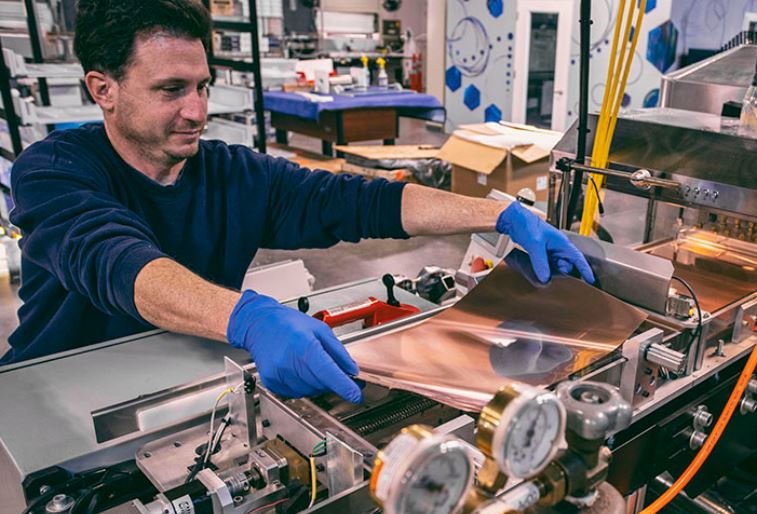Electronics are advancing faster than ever, and materials science is leading the way. Among the many breakthroughs, CVD Graphene has become one of the most transformative. With unmatched conductivity, strength, and flexibility, it is already shaping the next generation of electronic devices. By 2026, industries from consumer electronics to aerospace are adopting it at scale.
Why CVD Graphene Is Different
Chemical Vapor Deposition, or CVD, produces graphene in large, high-quality sheets. This method ensures uniformity and scalability, two key challenges that once limited graphene’s potential. The material is a single layer of carbon atoms arranged in a honeycomb pattern. Despite being only one atom thick, it is stronger than steel and more conductive than copper.
For electronics, these qualities are critical. Circuits can be smaller yet faster. Components can bend without breaking. Devices can operate with less heat while using less power. Unlike traditional materials, CVD Graphene offers a combination of mechanical strength, transparency, and conductivity that makes it ideal for modern demands.
Transforming Consumer Electronics
In consumer markets, innovation depends on creating devices that are thinner, lighter, and more powerful. Smartphones, tablets, and wearables are excellent examples of where graphene is making a difference. Flexible phone screens use it as a transparent conductor, replacing brittle materials like indium tin oxide. Smartwatches benefit from lighter batteries and faster charging, enabled by graphene layers.
Even beyond displays and batteries, graphene is enhancing sensors. Advanced biometric sensors built with graphene can track heart rate, hydration, or even glucose levels with greater precision. By 2026, these applications are not theoretical—they are already entering mainstream production.
Driving Innovation in High-Frequency Circuits
As technology evolves, electronics must operate at higher speeds. Traditional copper wiring creates resistance and heat, slowing performance. Graphene solves this problem. Its superior conductivity allows electrons to move with minimal resistance, supporting circuits that operate at terahertz frequencies.
In practice, this means faster internet connections, improved wireless communication, and powerful processors that handle complex tasks. Research shows that circuits made with CVD Graphene could dramatically reduce latency, a critical factor for industries like autonomous driving and AI-driven systems.
Energy Storage and Power Efficiency
Energy storage is another sector where graphene is changing the game. Batteries and supercapacitors built with graphene charge faster and last longer. For electric vehicles, this translates into reduced charging times and extended range. For consumer devices, it means smartphones that last longer between charges and laptops that recharge in minutes.
Supercapacitors enhanced with graphene also store energy more effectively, supporting renewable energy grids. By 2026, energy companies and device manufacturers are partnering with Graphene Products Suppliers to integrate this material into scalable solutions.
Expanding Role in Healthcare Devices
Healthcare electronics are also benefiting from graphene’s properties. Wearable sensors and medical devices need to be flexible, lightweight, and highly accurate. Graphene provides all of these qualities. Flexible electrodes made with graphene are improving EEG and ECG readings. Biosensors built with graphene layers can detect diseases at early stages by analyzing blood or saliva samples.
Because it is biocompatible, graphene can be used in direct contact with the human body. This opens the door for smart implants that monitor health in real time. By 2026, hospitals and research labs are already piloting these applications, supported by specialized suppliers.
Why Reliable Suppliers Matter
Graphene is powerful, but its true potential depends on quality. Companies need trusted suppliers to deliver consistent results. A dependable CVD Graphene Supplier like ACS Material ensures businesses can scale from prototypes to mass production without setbacks.
Practical Tips for Businesses Exploring Graphene
Companies planning to explore graphene in their projects should consider a few key points:
-
Work with experienced suppliers: Ensure they can provide high-quality, consistent material.
-
Start with pilot projects: Integrate graphene into smaller designs before scaling up.
-
Invest in training: Engineers and designers need to understand how to use new materials.
-
Stay updated on standards: As adoption grows, regulatory and industry standards will become more important.
-
Focus on collaboration: Many breakthroughs happen when businesses, suppliers, and researchers work together.
Looking Ahead: Why 2026 Is the Turning Point
The year 2026 represents a major shift in electronics. Demand for smaller, faster, and greener devices is pushing industries to adopt new materials. CVD Graphene is no longer just a research topic it is a commercial solution powering real-world applications. From flexible screens and high-speed processors to efficient batteries and healthcare devices, it is proving its value across multiple sectors.
Conclusion: Building the Next Generation of Technology
Graphene has long been called a wonder material, but now it is living up to the promise. With the scalability provided by Chemical Vapor Deposition, it has become accessible for mass production. In 2026, CVD Graphene supports electronics that are lighter, faster, and more energy-efficient.


